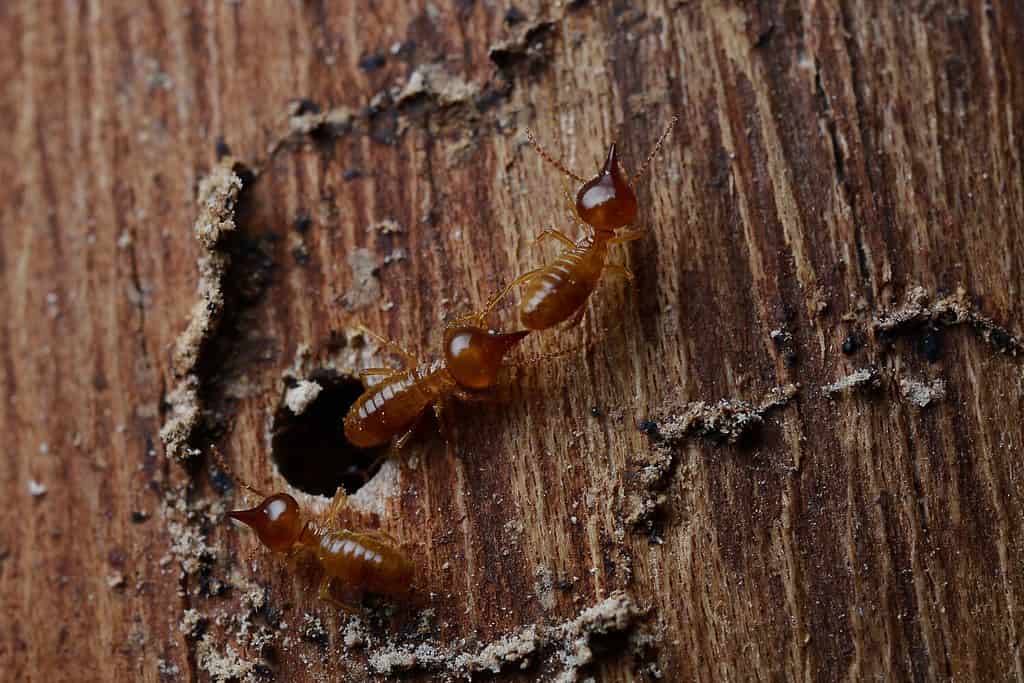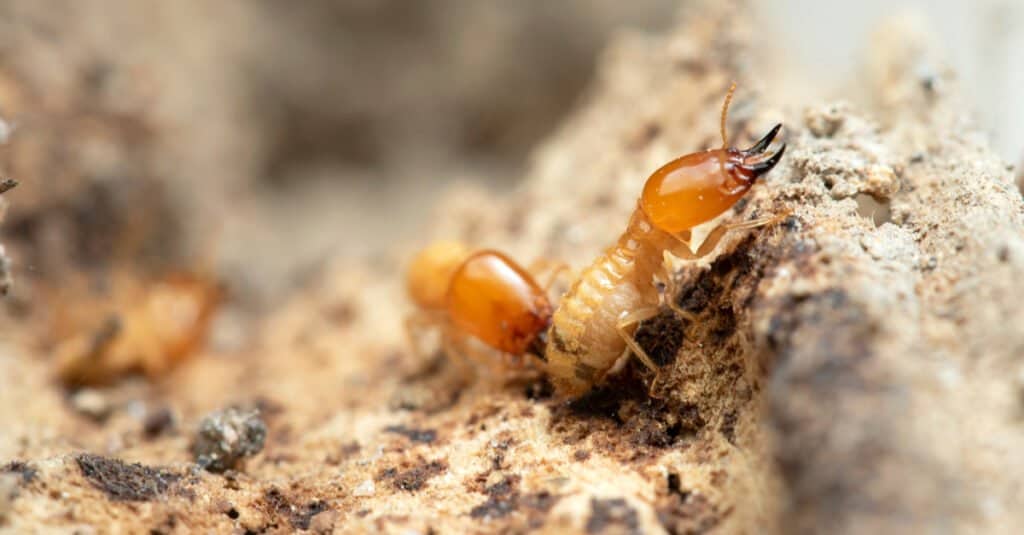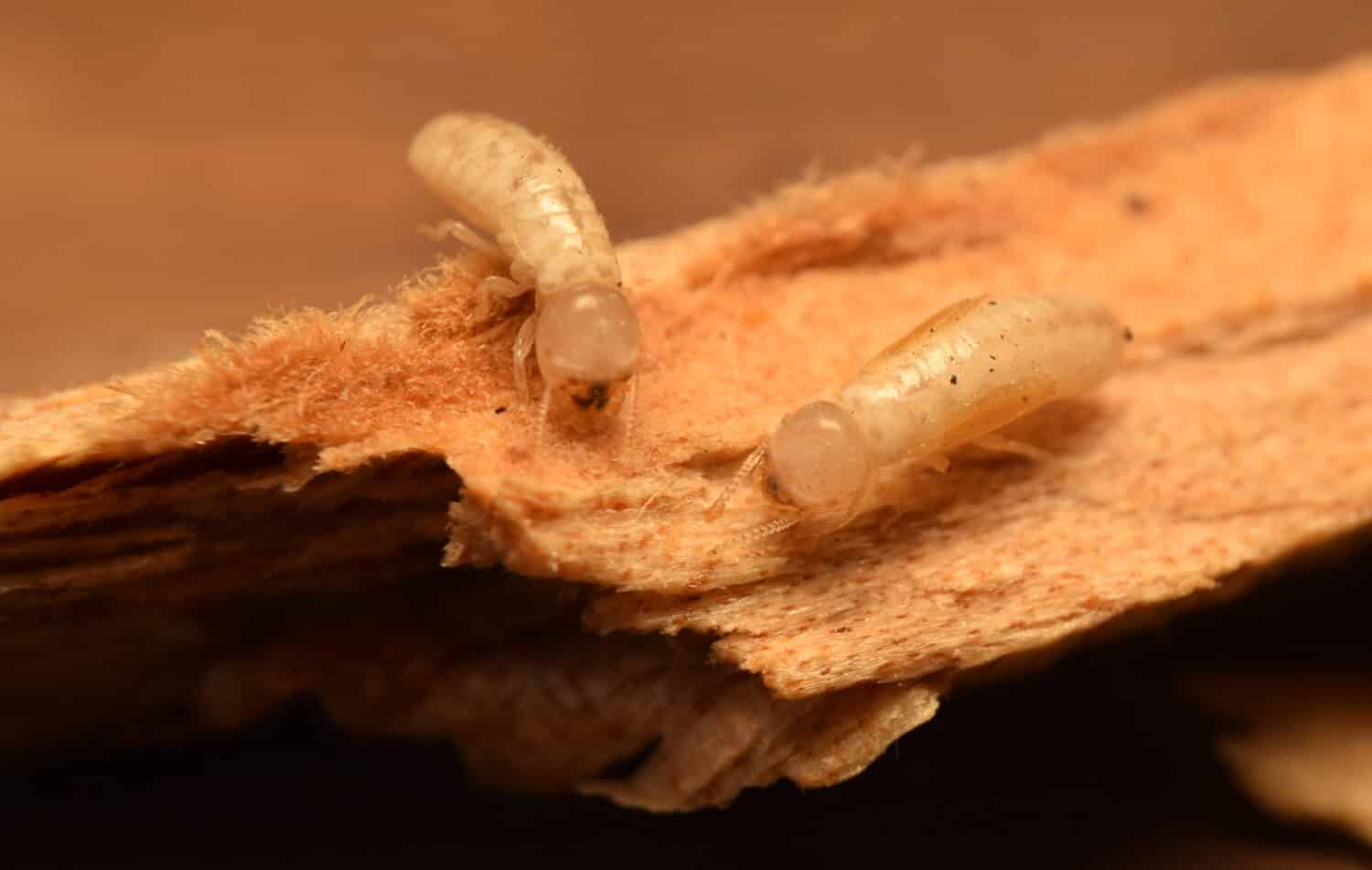If you’re a homeowner in the sunny state of Arizona, you know that termites can be a real pain in the you-know-what. These pesky critters can wreak havoc on your beloved abode, turning your dream home into a nightmare.
Arizona’s scorching heat might keep its residents warm, but it also creates the perfect environment for termites to thrive. These silent destroyers don’t discriminate, and they’re notorious for sneaking into homes without warning. But fret not, because we’ve got some tricks up our sleeves to send them packing.
In this guide, we’ll delve into the art of termite termination, Arizona-style. We’ll explore the signs of a termite infestation, teach you how to identify the different types of termites in this region, and most importantly, show you the best ways to bid them farewell for good. But first, let’s break down exactly what termites are.
Understanding Termites
Termites, often referred to as “white ants,” are fascinating insects classified under the order Isoptera. These tiny but highly organized creatures play a crucial role in ecosystems by breaking down dead plant material and recycling nutrients back into the soil.
Classification
Termites belong to the order Isoptera, a group that comprises over 3,000 species globally. They are further classified into three major families: Rhinotermitidae, Termitidae, and Kalotermitidae. Each family consists of various genera and species, with distinct characteristics and behaviors.
Native Habitats
Termites are ubiquitous, inhabiting a wide range of ecosystems across the world. They thrive in tropical rainforests, arid deserts, and temperate woodlands. Subterranean termites are particularly common in soil-rich regions, while drywood termites prefer drier climates. Despite their adaptability, termites are most abundant in tropical regions, where they fulfill crucial ecological roles as decomposers.
Life Cycle
The termite life cycle consists of several distinct stages: eggs, nymphs, workers, soldiers, and reproductives. A mature colony typically includes a king and queen responsible for reproduction. After mating, the queen can lay thousands of eggs daily. These eggs hatch into nymphs, which eventually develop into different castes. Workers are responsible for colony maintenance and foraging, while soldiers protect against predators.
Remarkable Social Behavior
One of the most intriguing aspects of termites is their complex social organization. Colonies can range from a few hundred to millions of individuals, depending on the species. They communicate primarily through chemical signals, allowing for efficient coordination within the colony. This social structure enables termites to build intricate nests, often made of soil, saliva, and feces, creating towering mounds or hidden tunnels.
Economic and Ecological Impact
While termites are essential for ecosystem health by recycling dead plant matter, they can be problematic when their voracious appetites target wooden structures and crops. In agriculture, they can damage crops, while in urban areas, they pose a threat to wooden buildings. Managing termite infestations requires careful pest control methods, including baiting and chemical treatments.

Termites are usually a whitish or brownish color and are fairly easy to identify.
©gunawand3570/Shutterstock.com
The Risks of Not Treating a Termite Infestation
Ignoring or delaying treatment for a termite infestation can have severe consequences, both economically and structurally. These silent destroyers can wreak havoc on homes and businesses, and addressing the issue promptly is crucial to prevent extensive damage and costly repairs.
Structural Damage
One of the most significant risks of neglecting termite infestations is structural damage to buildings. Termites feed on cellulose, which is found in wood, paper, and other plant-based materials. When left unchecked, they can devour wooden structures like support beams, floors, and walls. This weakening of the structural integrity can lead to safety hazards and expensive repairs.
Financial Consequences
The financial implications of ignoring termite infestations can be substantial. Repairing the structural damage caused by these pests often requires extensive construction work and the replacement of damaged materials. Homeowners may find themselves facing steep repair bills, which can strain their finances and lead to unforeseen expenses.
Decreased Property Value
Termite infestations can also significantly reduce the value of a property. When potential buyers or renters discover that a property has a history of termite problems, they are likely to be hesitant to invest. This can make it challenging to sell or lease the property at a reasonable price, leading to financial losses for property owners.
Health Concerns
While termites themselves do not pose direct health risks to humans, the presence of severe infestations can lead to mold and mildew growth. As termites often create moisture-rich environments within wooden walls, ceilings, and floors, they can create ideal conditions for these harmful fungi. Mold and mildew can trigger allergies and respiratory problems, potentially affecting the health of the occupants.
Increased Infestation Size
Termite colonies grow rapidly, and delaying treatment allows the infestation to spread further. A small infestation can quickly escalate into a larger, more destructive problem. The longer termites are left unchecked, the more challenging and expensive it becomes to eradicate them.
Environmental Impact
Termite infestations can also have environmental consequences. As wooden structures are damaged and replaced, it can lead to increased demand for timber and contribute to deforestation, which has adverse effects on the environment.

Termites are one of the more dangerous pest infestations to deal with, as they can severely damage the foundation of homes and businesses made from wood.
©phadpangpang/Shutterstock.com
Types of Termites Found in Arizona
Arizona is a state known for its diverse ecosystems and unique landscapes. Unfortunately, it is also home to several species of termites. While these pests share the common characteristic of wood consumption, they exhibit variations in behavior, habitat preferences, and impact on human structures.
Subterranean Termites (Reticulitermes spp.)
Subterranean termites are the most common and economically significant termite species in Arizona. They live underground and build extensive tunnel systems to access food sources, often making them challenging to detect until substantial damage has occurred. Notable species include the Western subterranean termite (Reticulitermes hesperus) and the Desert subterranean termite (Heterotermes aureus). These termites are notorious for their ability to damage wooden structures, requiring prompt pest control measures.
Drywood Termites (Incisitermes minor)
Drywood termites are another termite species found in Arizona. Unlike subterranean termites, they do not require direct contact with soil and infest dry, sound wood. Their colonies are typically smaller than subterranean colonies, making them less destructive but still capable of causing significant damage over time. Drywood termites are commonly found in wooden structures, furniture, and dead trees.
Dampwood Termites (Zootermopsis spp.)
Dampwood termites are less prevalent in Arizona but are still present in specific regions with high moisture content. They are attracted to decaying wood and require a constant source of moisture to survive. While they are not as likely to infest homes and buildings as subterranean or dry wood termites, they play a valuable role in the ecosystem by breaking down decaying vegetation.
Conehead Termites (Nasutitermes corniger)
Conehead termites are not native to Arizona but have been introduced to the state. They are known for their aggressive foraging behavior and destructive tendencies. Conehead termites construct large nests in trees and can move quickly to infest nearby structures. The presence of these invasive termites in Arizona raises concerns for both homeowners and agricultural interests.
Where Are Termites Found in Abundance in Arizona?
Termite populations in Arizona are not evenly distributed across the state, as their prevalence is influenced by environmental factors, climate conditions, and habitat suitability. While termites can be found throughout Arizona, some regions have larger termite populations than others due to these factors.
Southern Arizona
Southern Arizona, including cities like Tucson and its surrounding areas, tends to have a higher termite population. The warm and arid climate in this region provides favorable conditions for termites, particularly subterranean termites. The availability of moisture in the soil and the abundance of wooden structures make this region a hotspot for termite activity.
Phoenix Metropolitan Area
The Phoenix metropolitan area, which includes Phoenix, Mesa, Scottsdale, and surrounding suburbs, is another hotspot for termite populations in Arizona. The combination of a large urban population and a variety of building materials used in construction creates ample opportunities for termites, especially subterranean termites, to thrive.
Northern Arizona
Northern Arizona, with its cooler and more mountainous terrain, generally experiences fewer termite issues compared to the southern regions. While termites are still present, their populations tend to be smaller and less destructive. Drywood termites are more common in this area due to the prevalence of wooden structures.
Eastern Arizona
Eastern Arizona, encompassing areas like Flagstaff and the White Mountains, has a moderate termite presence. The climate in this region is less conducive to termites than in the southern parts of the state, but they can still be a concern for homeowners with wooden structures.
Western Arizona
Western Arizona, near the border with California, has a relatively lower termite population compared to the southern and central parts of the state. The arid desert conditions in this area are less favorable for termites, but they can still be found, particularly in areas with higher moisture levels.

Termites are a common problem among Arizona homeowners, but getting rid of them is not too difficult.
©bamgraphy/Shutterstock.com
How to Prevent Termites in Arizona
If you suspect a possible termite infestation or you simply want to protect your property from future attacks, it’s crucial to understand how to get rid of termites and prevent their return. The following tips are helpful for homeowners to identify and treat termite infestations, but it is worth noting that most infestations will require the assistance of a trained pest control specialist.
Identification of Termite Species
Before embarking on a journey to eliminate termites, it’s essential to identify the specific termite species infesting your property. This knowledge is vital because treatment approaches may vary depending on the type of termites involved. Common termite species include subterranean termites, drywood termites, and dampwood termites. A professional pest inspector can accurately determine the species and assess the extent of the infestation.
Treatment Options for Termite Eradication
Chemical Termite Treatments
Chemical treatments are a widely used method to combat termite infestations. These treatments can be classified into two main categories:
Liquid Termiticides
Liquid termiticides are applied in the soil around the foundation of a structure. They create a protective barrier that termites cannot penetrate. Liquid termiticides are highly effective against subterranean termites, the most common termite species.
Termite Baits
Termite baits consist of slow-acting toxins strategically placed in bait stations around the property. Termites feed on the bait and carry it back to the colony, effectively eliminating the entire colony over time.
Heat Treatment
Heat treatment involves raising the temperature within a structure to levels lethal for termites. This method is particularly effective against dry wood termites, as it targets termites infesting wooden elements within the structure.
Fumigation
Fumigation is a tenting method used when dealing with severe dry wood termite infestations. The entire structure is covered with a gas-proof tent, and a fumigant gas is introduced. This gas permeates the structure, penetrating even hard-to-reach areas, ensuring comprehensive termite eradication.
Physical Barriers
Preventing termites from entering your property in the first place is a proactive approach to termite control. Physical barriers like stainless steel mesh and termite-resistant building materials can be installed during construction to deter termites.
The Role of Professional Pest Control Services
While some homeowners may attempt do-it-yourself termite treatments, it’s important to recognize the limitations of such efforts. Professional pest control services are often the most reliable means of termite eradication. Pest control experts possess the knowledge, experience, and access to specialized equipment and chemicals required to effectively eliminate termites. They can also provide ongoing monitoring to ensure the infestation does not return.
Preventing Future Termite Infestations
Prevention is a key component of long-term termite control. After successfully eradicating termites from your property, it’s essential to take proactive measures to prevent their return. Here are some strategies for keeping termites at bay:
Regular Inspections
Schedule regular termite inspections by professionals, especially if you live in an area prone to termite activity. Early detection can prevent significant damage by allowing for swift intervention.
Moisture Management
Termites are attracted to moisture. Promptly repair any leaks, ensure proper drainage away from the foundation, and maintain clean gutters and downspouts to prevent water buildup near your property.
Wood-to-Ground Separation
Avoid direct contact between wooden structures or materials and the soil. Use concrete or metal barriers to create a gap, making it more challenging for termites to access these materials.
Proper Storage
If you store firewood, lumber, or other wooden materials on your property, keep them elevated and away from the main structure. This reduces the risk of termites infesting these materials and spreading to your home.
Ventilation and Insulation
Maintain proper ventilation in crawl spaces and attics to reduce humidity levels. This makes these areas less attractive to termites. Adequate insulation helps regulate temperature and moisture, further discouraging termite activity.
Termite-Resistant Materials
When building or renovating, opt for termite-resistant materials such as treated wood, metal, or concrete. These materials are less appealing to termites, reducing the risk of infestation.
Landscaping Considerations
Termites can infest trees and shrubs. Regularly inspect landscaping plants, and if infestations are detected, consider removing them to prevent termites from spreading to nearby structures.
Educate Yourself
Knowledge is a powerful tool in termite prevention. Familiarize yourself with termite behavior and habits, enabling you to recognize the signs of an infestation and take early action.
Professional Maintenance
Even after successful termite eradication, continue to enlist professional pest control services for regular inspections and preventive treatments. Prevention is an ongoing process that requires vigilance.
Dealing with termites is a multifaceted challenge that demands a combination of effective treatment methods and proactive prevention measures. Accurate identification of termite species in Arizona is the starting point, as it influences the choice of treatment approach. Professional pest control services are often the best option for termite eradication, given their expertise and resources. Good luck!
Thank you for reading! Have some feedback for us? Contact the AZ Animals editorial team.








